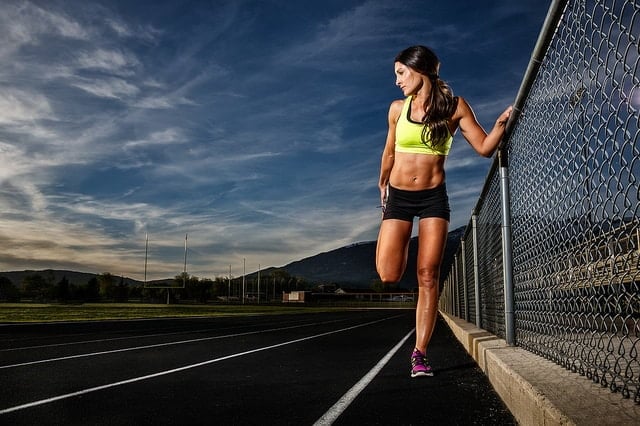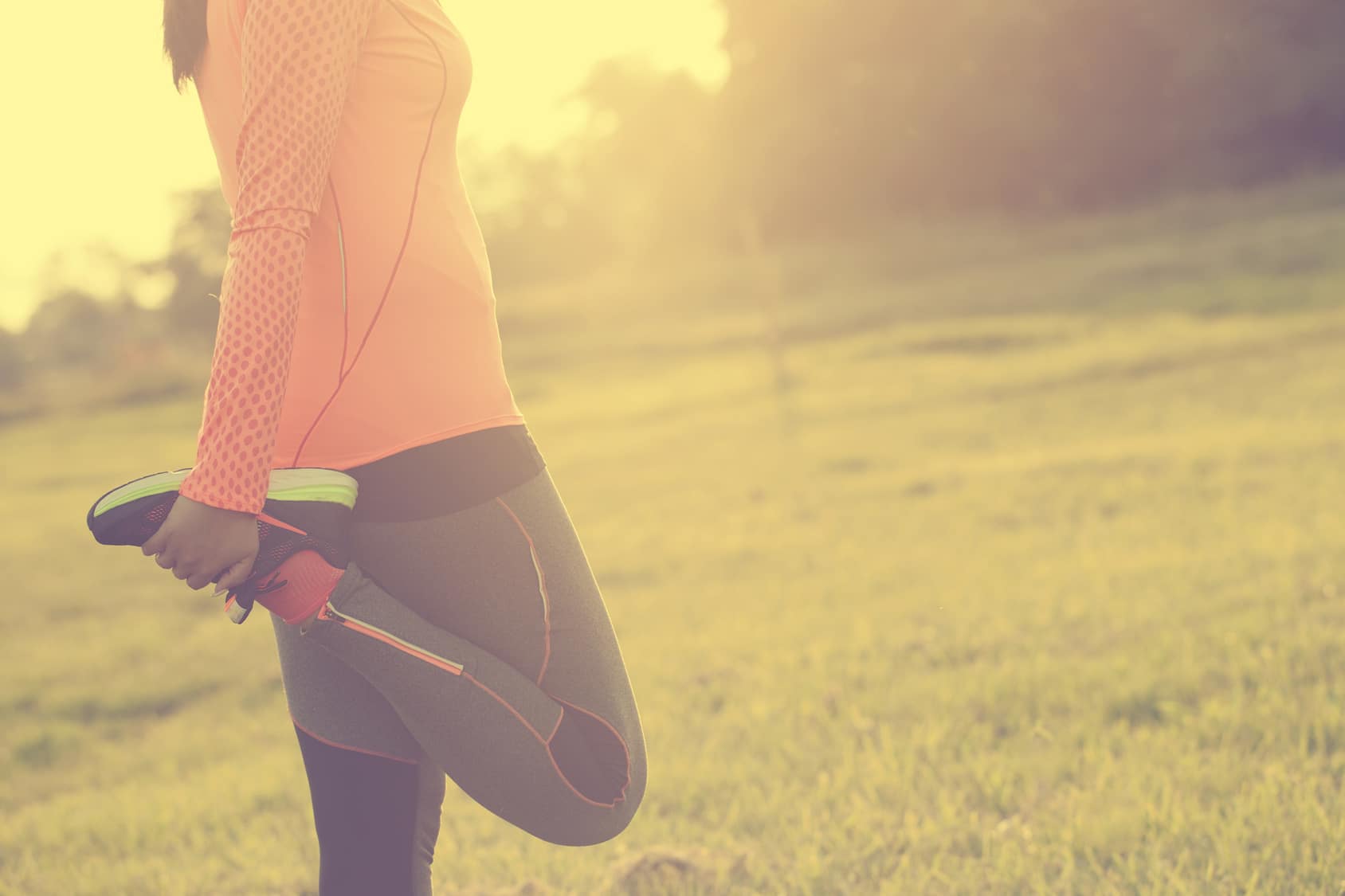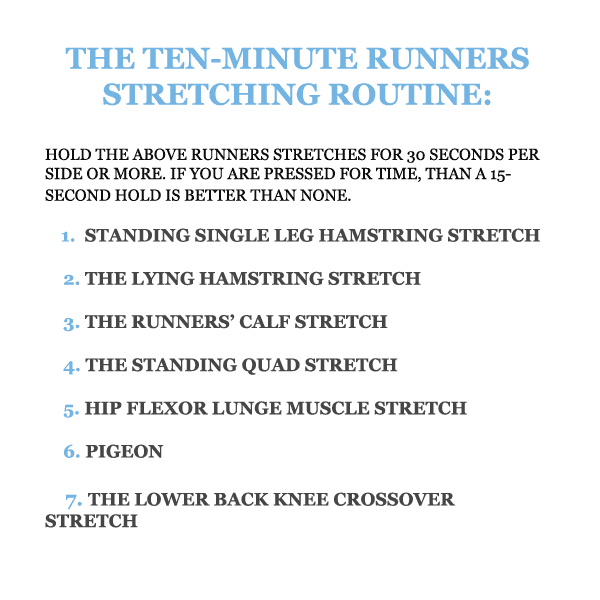

Running is cardiovascular exercise per excellence.
I love it, and it’s great for you. But there is a catch. Running can also put stress on your body—mainly in the lower limbs and joints.
What is this stress is all about? Well, it’s simple…
The build-up of this stress can lead to tightness, loss of flexibility and mobility in the lower body, which can limit performance and may even result in injury.
The Road to trouble…
With every stride you take, your lower limbs are forced to flex and extend over and over to propel you down the road.
As you log in more miles, according to theory, these overworked muscles and tendons can develop scar tissue, tension, and imbalances, compromising your running performance and increasing the risks of common overuse injuries such as Achilles tendonitis and IT Band syndrome.
Running Aint Enough
Yes, running can give you lean, toned and enviable legs. But hitting the pavement isn’t sufficient—especially if you are serious about staying pain- and injury-free for the long haul.
For that, you’d also need a regular stretching routine to counterpart these stress effects.

Why stretching is vital?
Although the current research doesn’t fully agree, every runner (me included) knows that flexibility is critical for runners.
In fact, a report from the CDC (the Center for Diseases Control) revealed that there is not enough evidence to support or undermine the effectiveness of pre- and post-run stretching to prevent injury among recreational or competitive athletes.
Nonetheless, lack of proof is not proof in itself. That doesn’t dissuade me one bit from dropping my mat time, and never stretching again.
According to my experience, stretching on a regular basis can help runners build flexibility, relieve tension and prevent injury.
With that said, most athletes overlook the importance of a good stretching routine for flexibility and injury prevention. And that’s a big mistake that you ought to avoid, regardless of your fitness level.
What Runners Need to Stretch?
As a runner, you would need to focus on three main areas:
(1) The hamstrings,
(2) The quads,
(3) And the calves (including the gastronomes and soleus (deep) muscles).
For more results, you might also consider stretching your hip flexors and lower back—especially if you are suffering from any sort of chronic hip and/or lower back pain.
How to Stretch
Stretching a stiff and cold muscle may lead to a tear, or worse, injury. That’s why you should never stretch before a run.
Not only that, study shows that stretching before a workout can compromise performance.
If you have to stretch before a run, then do ballistic stretches (like shown in this dynamic warm-up routine) to get your body loose, and muscles warmed for the exercise.
To err on the right side, it’s always safer to stretch after a run—when your muscles are warmed and loose.
Hold each position for 30-second to one full minute on each side and breathe deeply to release any tension. Just don’t overstretch it since doing too much will force your muscles to fight back, leading to injury.
So take it slowly.
The 7 Stretches Every Runner Should Do
These are my favorite stretches to target your running muscles.
Targeted Muscle: The Hamstrings
The hamstrings are prone to injury—especially among runners with tight hamstrings issues.
Tight hamstrings can lead to pulled muscles and lower back problems as well as hindering range of motion, thus limiting running efficiency.
Here are two runners stretches to help you improve hamstrings flexibility and mobility.
1: Standing Single Leg Hamstring
- Stand with your feet hip-distance apart.
- Bend your right knee and extend your left leg pointing the toes up.
- While holding this position, lower your upper body and reach toward your left toes as far as you can.
- Hold the position for 30-second then switch to the other side.
2: The Lying Hamstrings Stretch
- Lie flat on your back with legs extended and back straight.
- While keeping your left leg extended on the floor, bend your right knee towards your chest.
- Reach for the back of your right knee and slowly straighten it up.
- Pull the right leg towards you while keeping both hips on the floor.
- Hold the stretch for 30-second then switch sides.
Targeted Muscle: The Calves
The calves are the most overworked muscles on the run, and losing flexibility and mobility in this area can set the stage for calf strains, shin splints and plantar fasciitis. On the other side, flexible calves can improve your ability to boost the length and cadence of your strides, leading to increased speed.
3. The Runners’ Calf Stretch
- Stand facing a wall and with your arms extended and back straight, place both arms on the wall.
- While keeping both feet flat, take a step backward with your right leg, while keeping your heel planted to the ground and the leg extended without bending the knee.
- To stretch the calf, lean forward slightly to the wall while actively pressing your back heel into the ground until you feel a good stretch in muscle.
- Breathe deeply and Hold the stretch for 30-second or more then switch sides.
Targeted Muscle: The Quadriceps
Flexible quadriceps (front thigh) muscles are key for a stronger knee lift and speed. Not only that, one of the main sources of the dreadful runners knee can be traced to tight quads. Therefore, stretching them regularly will help you become a better and less prone to injury.
4. The Standing Quadriceps Stretch
- Stand with legs hips distance width apart.
- Grab a chair for balance (if necessary) and stand tall while holding your right foot behind butt pointing knee to floor.
- Slowly move your right foot to the back and feel the stretch in your quadriceps.
- Keep your thighs lined up and core engaged throughout the stretch and hold for no more than 30-second.
- Repeat with the left leg.
Targeted Muscles: The Hip Flexors
For most runners, the hips are the weak link. Ignoring your hip flexor flexibility can set the stage for runners’ knee, Iliotibial band syndrome, lower back pain and other trouble. I’m particularly guilty of this. And I believe that tight hip flexors are the reason why I suffered from knee problems for so many years.
5. The Hip Flexors Lunge Stretch
- Begin in kneeling position and lunge forward with your right leg and keep the left knee hard-pressed to the floor.
- Extend your hips forward until you feel a stretch down the front of left leg around the hip area.
- Repeat on the opposite side.
6. The Pigeon
One of my favorite Yoga poses for runners is the Pigeon, and here is how to do it right. This move also targets the hips flexor and the lower back.
- Assume table position—on all fours.
- Bend your right knee and bring it forward to a comfortable position between your hands
- Take your left leg and stretch it fully behind you
- Exhale and bend down to the ground. Make sure you’re resting your torso on your leg and head on the floor.
Targeted Muscles: The Low Back Muscles
This area is another major muscle group you would need to stretch regularly to release running stress, improve mobility in the lower body, and prevent the pains and aches of the lower back—this is especially true since running is high impact.
7. The Lower Back Knee Crossover Stretch
- Lie on your back with legs extended and back straight.
- Grab your right foot, knee bent.
- While keeping your left shoulder on the floor, grab the outside of your knee with your left hand and guide it across your body and towards the ground on your left side.
- Try to get your knee closer to the ground while keeping both shoulders in contact with the floor.
- Go back to starting position and perform the stretch on the other side.

You could end this runners’ stretch routine by Shavasana. Just lay there on your back arms and legs spread at about 45 degrees and breathe deeply. It’s good for ya!
Please leave your comments and questions below. Looking forward to hear from you.
Thank you.
Photo Credit: Jeremy Hall Via Flickr
Original article and pictures take http://www.runnersblueprint.com/blog/stretches_every_runner_should-do/ site

Комментариев нет:
Отправить комментарий